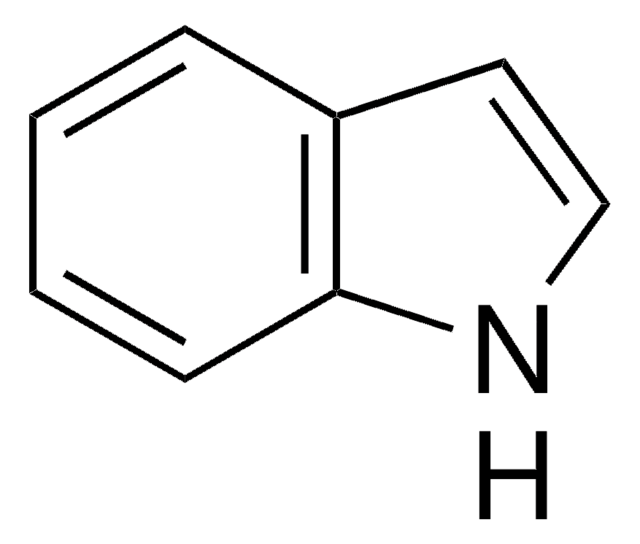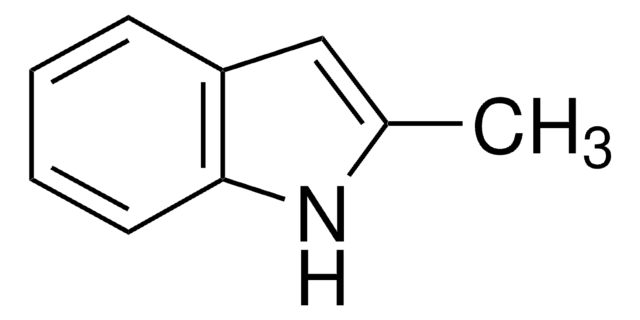W301912
Skatole
≥98%
Synonym(s):
3-Methylindole, Skatole
About This Item
Recommended Products
biological source
synthetic
Agency
meets purity specifications of JECFA
Assay
≥98%
bp
265-266 °C (lit.)
mp
92-97 °C (lit.)
application(s)
flavors and fragrances
Documentation
see Safety & Documentation for available documents
food allergen
no known allergens
Organoleptic
animalic
SMILES string
Cc1c[nH]c2ccccc12
InChI
1S/C9H9N/c1-7-6-10-9-5-3-2-4-8(7)9/h2-6,10H,1H3
InChI key
ZFRKQXVRDFCRJG-UHFFFAOYSA-N
Looking for similar products? Visit Product Comparison Guide
General description
Application
- Microbiome-metabolomics analysis reveals abatement effects of itaconic acid on odorous compound production in Arbor Acre broilers.: Investigates the impact of itaconic acid on the microbiome and metabolomics profiles of broilers, significantly reducing skatole production, which is a key contributor to odors in poultry (Zhu et al., 2023).
- Postmortomics: The Potential of Untargeted Metabolomics to Highlight Markers for Time Since Death.: Discusses the potential of untargeted metabolomics in forensic science to identify time-since-death markers, including skatole, which is relevant in decomposition studies (Pesko et al., 2020).
- A versatile method for producing labeled or unlabeled Aß55, Aß40, and other ß-amyloid family peptides.: This article describes methods for producing peptides in biochemistry, including skatole, used in research contexts related to protein misfolding diseases (Zerweck et al., 2019).
- Chemical-Mediated Digestion: An Alternative Realm for Middle-down Proteomics: Explores alternative methods for protein digestion in proteomics, using chemical mediators including skatole to facilitate the process, offering new avenues for the study of protein structures and functions (Srzentic et al., 2018).
Disclaimer
Hazard Statements
Precautionary Statements
Hazard Classifications
Aquatic Chronic 2
Storage Class Code
11 - Combustible Solids
WGK
WGK 2
Flash Point(F)
269.6 °F
Flash Point(C)
132 °C
Certificates of Analysis (COA)
Search for Certificates of Analysis (COA) by entering the products Lot/Batch Number. Lot and Batch Numbers can be found on a product’s label following the words ‘Lot’ or ‘Batch’.
Already Own This Product?
Find documentation for the products that you have recently purchased in the Document Library.
Customers Also Viewed
Our team of scientists has experience in all areas of research including Life Science, Material Science, Chemical Synthesis, Chromatography, Analytical and many others.
Contact Technical Service










